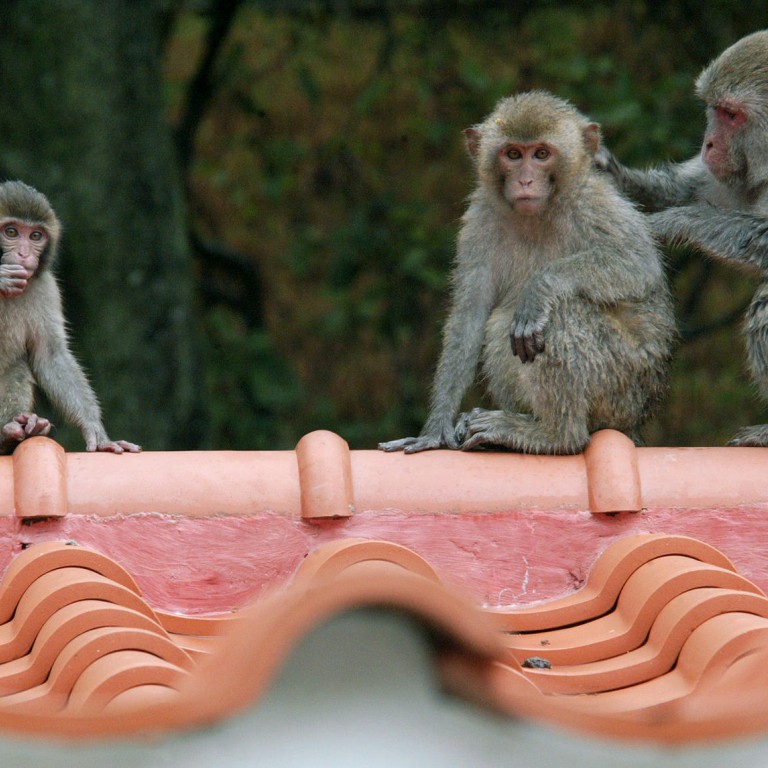
Then & now: what the macaque?
Environmental monkeying around has bequeathed a hairy - and vicious - legacy to the Hong Kong countryside, writes Jason Wordie
As the summer heat declines, many local residents' thoughts turn to hiking. Hong Kong's countryside trails offer challenges to suit a wide range of physical abilities, as well as dramatic views. However, in certain parts of the New Territories, the trails are intermittently shared with other forms of hairy hominid.
Rhesus macaques ( ) have almost reached plague proportions in certain sections of Hong Kong's country parks, especially in Shing Mun, in the hills above Kwai Chung, and near Golden Hill. Due to their abundance, Golden Hill is known locally as Ma Lau Shan (monkey mountain). But why are rhesus macaques found in that part of the New Territories in such numbers?
The reason can be traced back to water shortages. The scenic Shing Mun Reservoir, and the negotiations that led to its construction, form a little-known sidebar to the history of Hong Kong.
By the 1920s, the colony was in desperate need of a new reservoir. The Hong Kong government was reluctant to finance major capital works in leased territory due to be returned to Chinese administration. But the local water situation became so serious that a solution had to be found. The Shing Mun Reservoir was completed in 1934 and named the Jubilee Reservoir, after King George V's silver jubilee, the following year.
But problems soon arose. For centuries, the Shing Mun valley had been extensively deforested by agricultural practices and the stripping of hillsides for firewood. To encourage better water-catchment conservation, reforestation was undertaken when the reservoir was complete.
But as soon as the young trees started to grow they were choked out and smothered by rampant mikania vines. A South American native, was introduced locally as a garden plant in the 19th century. It rapidly became naturalised here due to a lack of indigenous predators and eventually became a noxious weed. Mikania has been known to generations of Hong Kong gardeners as the "mile-a-minute vine" - a growth of 8cm in a day is not unusual.
Rhesus macaques love mikania, and to help control the weed, breeding troops were introduced to Shing Mun in the late 30s.
That solved the mikania problem, but created another one. The macaques steadily colonised the Kowloon hills. Creative solutions that prove worse than the original problem are not unique to Hong Kong. Cane toads introduced to help control destructive beetle populations in 19th-century Australian sugar plantations spread nationwide to become a greater environmental threat than the pest they were imported to manage.
In recent years, rhesus macaques have bred even more prolifically, sustained by an abundance of food left at barbecue sites after weekend picnics. Occasionally quite vicious - and who wouldn't be with the mindless harassment some picnickers give them? - these monkeys can be seen crashing through the undergrowth just beyond Kowloon's densely packed urban areas.
